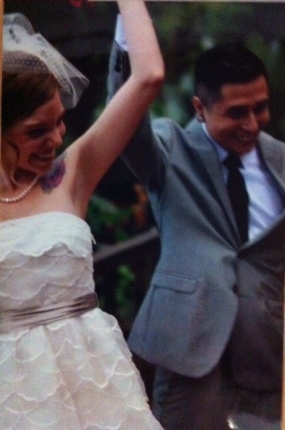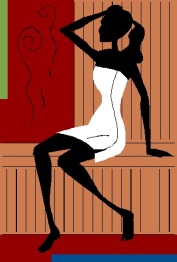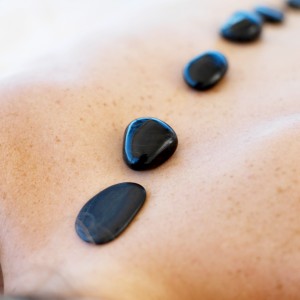
Sometimes, drugs *are* bad.
Once upon a time, (circa March 2012) I started laughing hysterically while sitting in traffic on the 90/94 Expressway in Chicago. Except there was absolutely *nothing* funny going down at that time, not on the radio or the street or even in my memory or imagination. Thus, understandably, my first rational thought was, “Am I insane?” Seriously. It could happen. People have psychotic breaks and/or manic episodes all the time, and maybe the ol’ job (or commute) had finally driven my poor brain over the edge. Before looking myself up in the Diagnostic and Statistical Manual of Mental Disorders, I had a “Stop and Think” moment.
Had I taken a little blue pill called zolpidem tartrate the night before? Why yes, yes I had. The Walgreen’s pamphet on Possible Side Effects made for some interesting reading. Euphoria? Check. Luckily, at least to my knowledge, I had not partaken in sleep-walking, sleep-driving (!), meal preparation / consumption, making phone calls, and ahem, other activities, while not fully awake. Phew. And I could rule out insanity, at least as it pertained to the cracking up in traffic incident.
So how exactly did I end up taking psychotropic medication in the first place? You see, as I like to say, every girl needs two kinds of doctors in her life: Dr. Prevention and Dr. Prescription-Writer. I had tried Dr. Prevention’s way, after a 30-minute consultation with her. After a bout of insomnia brought on by accidentally taking allergy meds containing pseudoephedrine, (the chemical precursor meth), she told me to relax, listen to soothing music, and take a bath. If only.
Days later, unable to score one of Dr. Prevention’s coveted half-hour appointment slots, I begged the office for a same-day appointment. At that point, I was willing to see just about *any* doctor. Given that Dr. Prescription-Writer saw patients for an efficient 15 minutes or less, he had time in his schedule.
Thinking I’d have to make a case for why he needed to immediately give me the juice, I came armed with a bulleted list. Irrelevant! He wrote it up and within an hour those sweet little 12.5mg pills were all mine. Before the FDA reduced the dosage considered safe for women. The little blue guys succeeded in knocking me out for about 5-6 hours, except it was a weird, trance-like brand of sleep-esque coma rather than true, restorative sleep. Like the time when my Italian grandma gave me Carlo Rossi to knock me out (Irish friends got whiskey), Ambien is to real sleep as I Can’t Believe it’s Not Butter is to real butter. I prefer the real deal.
Life Lesson: sometimes, for some people, Mr. Mackey’s famous tirade makes some valid points. Prescription meds definitely have their place. Personally, next time I’ll try whipping out every other drug-free tool in my toolbox first. See below.
Yoga Solutions:
1. Restorative, supported inversions such as Viparita Karani,* sometimes called “Legs Up the Wall Pose,” can combat insomnia as well as stress, anxiety, and even back pain and foot / leg cramps. Even a few minutes (up to 15) may be enough.
2. Forward Folds such as Balasana (Child’s Pose) often calms the mind and relieves stress and fatigue.
3. Ayurvedic Self-Oil Massage (Abhyanga), especially on the bottoms of the feet, often benefits sleep patterns and promotes relaxation.
4. De-Clutter. Sometimes messy bed(room) = messy head. When all else fails, try getting up and doing something. Organize your sock drawer, closet, or junk drawer.
*Nerdy Fact: How does this work? When experiencing a stress response, putting the body in to a supported inversion such as Viparita Karani can reverse this process by encouraging blood flow to the internal organs. This counteracts the sympathetic nervous system’s “fight or flight” response, which sends blood flow to extremities, and activates the parasympathetic nervous system, encouraging the body to “rest and digest.”













